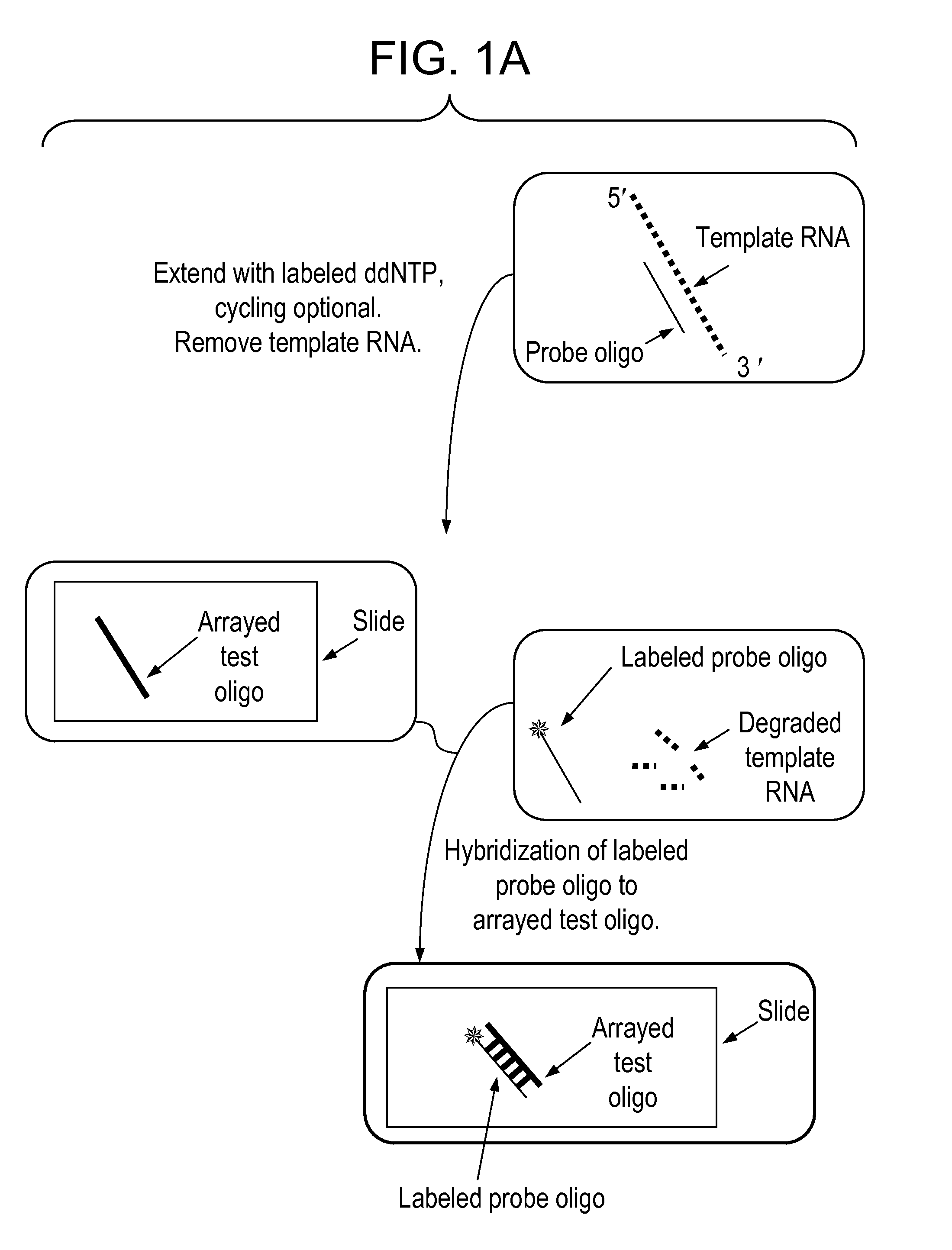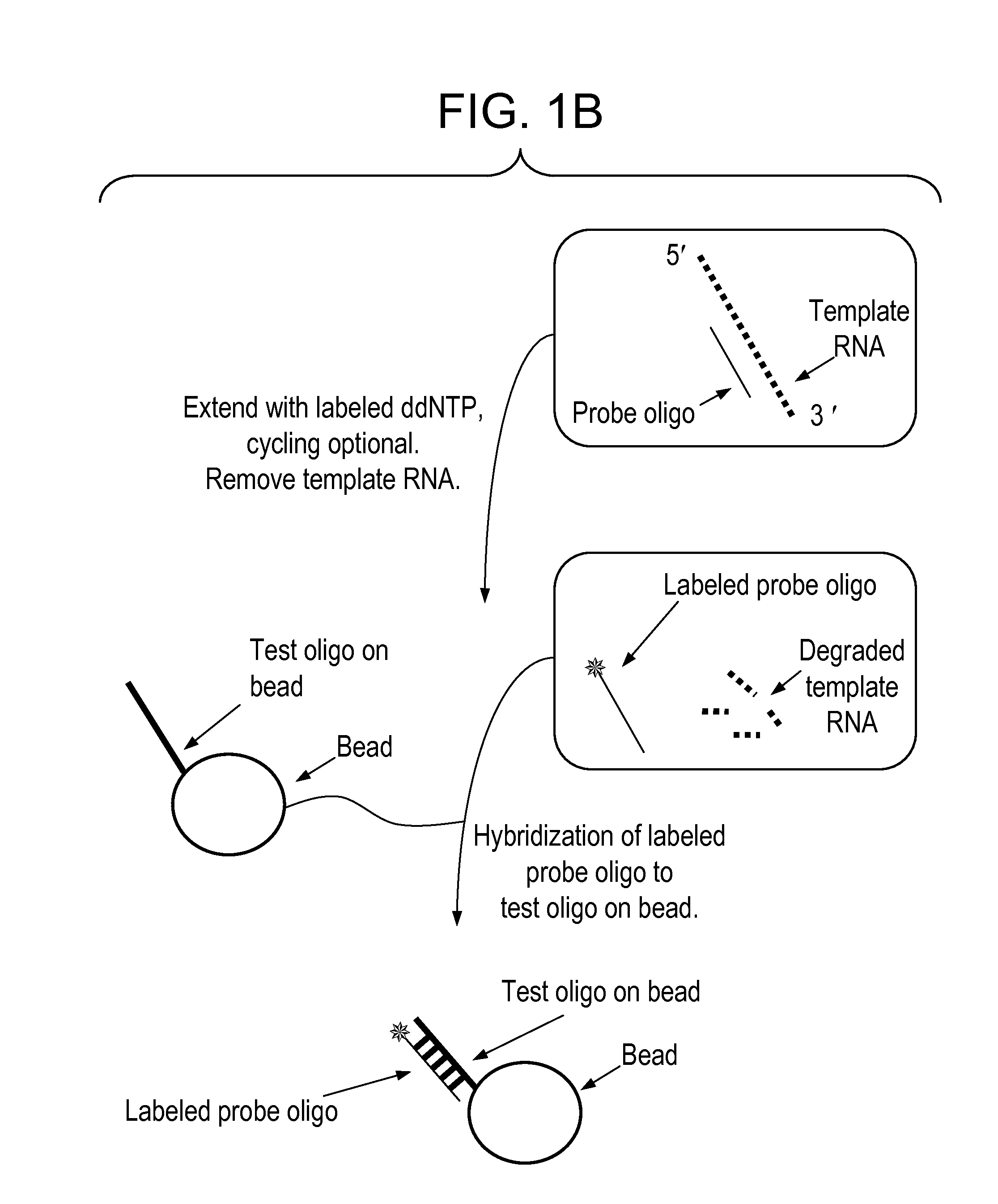Detection method for gene expression
a gene expression and detection method technology, applied in the field of gene expression detection and quantification methods, can solve the problems of cumbersome strategy, skew of experimental results, and inability to meet the requirements of oligo array application, so as to reduce the hybridization time, simplify the probe content, and achieve the effect of hybridization success
- Summary
- Abstract
- Description
- Claims
- Application Information
AI Technical Summary
Benefits of technology
Problems solved by technology
Method used
Image
Examples
Embodiment Construction
[0016]We describe here methods for detection of gene expression using an approach that involves labeling, by a polymerase reaction, of the complement oligonucleotide probes (to those that are arrayed) with a mixture of dye or hapten labeled-ddNTPs and template nucleic acid in solution. This approach has a very important distinction from arrayed primer extension in that the oligonucleotide probes being labeled are in solution rather than on solid support. The extended oligonucleotide probes, which are labeled, are then used to hybridize to their partners (test oligonucleotides) on the solid support. The level of gene expression is measured by the presence and intensity of the color emitted from the label. The oligonucleotide probes are selected such that they only hybridize to the specific gene they derived from, both in the labeling step, and in the solid support hybridization step. Preferably, the oligonucleotide probes are from about 10 to about 100 nucleotides in length, more pre...
PUM
| Property | Measurement | Unit |
|---|---|---|
| length | aaaaa | aaaaa |
| fluorescent | aaaaa | aaaaa |
| colors | aaaaa | aaaaa |
Abstract
Description
Claims
Application Information
 Login to View More
Login to View More - R&D
- Intellectual Property
- Life Sciences
- Materials
- Tech Scout
- Unparalleled Data Quality
- Higher Quality Content
- 60% Fewer Hallucinations
Browse by: Latest US Patents, China's latest patents, Technical Efficacy Thesaurus, Application Domain, Technology Topic, Popular Technical Reports.
© 2025 PatSnap. All rights reserved.Legal|Privacy policy|Modern Slavery Act Transparency Statement|Sitemap|About US| Contact US: help@patsnap.com



